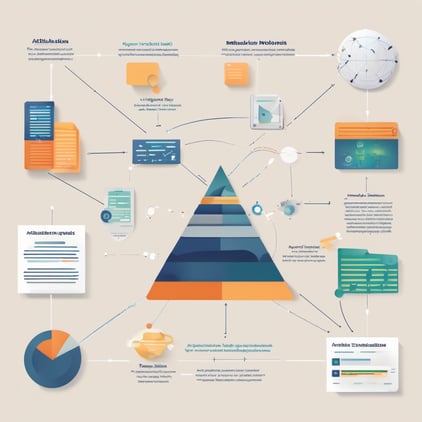Why define the marketing process for a CRM platform?
A Customer Relationship Management or CRM is an essential tool for companies that want to maintain and enhance their relationships with customers. To...
5 min read
Por Alfonso Ramírez | Feb 27, 2024
Has your company ever applied a methodology that certifies the performance of your company's overall conversion through marketing channels, campaigns, and direct practice to attract customer engagement?
If that isn't the case, here's how attribution models can revolutionize your marketing strategies and boost your ROI.
In this article, you'll discover the proper basic foundations of what an attribution model's purpose is for your company, why it is so essential for your marketing operations, and the different types of attribution models that exist nowadays while understanding which ones are right for your business model, how to implement and execute them to measure success.
Now, let's take a look through each segment:
What is an attribution model?
An attribution model is like a framework that helps marketers resolve how to assign actual credit to various marketing touchpoints that contribute to a conversion. It is a way to track and measure the effectiveness of multiple marketing channels and campaigns in driving customer engagement and conversions. Attribution models provide insights into the customer journey and help marketers understand which marketing efforts are most influential in driving desired outcomes.
An attribution model shows the customer's path from initial awareness to the final conversion. It helps marketing teams comprehend the effect of their marketing actions at each step of the customer journey, enabling them to make data-driven decisions and optimize their marketing strategies.
>> Importance of Automation <<

The importance of attribution models in marketing
Attribution models play a crucial role in marketing because they provide valuable insights into the performance of different marketing channels and campaigns. Your marketing coordinators can allocate their resources and budget more efficiently by understanding which touchpoints are most effective in driving conversions. Instead of relying on guesswork or assumptions, attribution models allow marketing managers to make informed decisions based on data and evidence.
Moreover, attribution models help marketers identify the strengths and weaknesses of their marketing strategies. Marketing specialist can identify areas where their campaigns fail by analyzing the customer journey and attribution data and making necessary adjustments. This continuous optimization based on attribution data leads to more effective marketing strategies and higher return on investment (ROI).
Different types of attribution models
There are several attribution models, each with its approach to assigning credit to marketing touchpoints. Some standard attribution models include:
These are just a few examples of attribution models, and each business may choose the model(s) that align best with their marketing goals and strategies.
Choosing the right attribution model for your business
Selecting the suitable attribution model for your business relies on various elements, including your marketing objectives, industry, customer behavior, and available data. Here are some considerations to keep in mind:
By considering these factors and aligning the attribution model with your business goals, you can make better and well-informed decisions to optimize your marketing actions.

Implementing Attribution Models in Your CRM
To implement attribution models in your CRM (Customer Relationship Management) system, follow these steps:
By implementing attribution models in your CRM system, you can achieve valuable insights into the efficacy of your marketing actions and improve your campaigns' general performance.
Measuring the success of your attribution model
Measuring the success of your attribution model involves evaluating its impact on your marketing strategy and overall business goals. These are some of the critical metrics and approaches to reckon with:
It is crucial to understand and understand that attribution models are essential tools to optimize a company's marketing strategies and achieve a higher ROI. There are different types of attribution models, each with its own approach to assigning credit to marketing touch points where leads, subscribers, MQLs and SQLs interact.
Choosing the right model depends on marketing objectives, industry and available data. By implementing these models in a CRM system, companies can gain valuable insights into the effectiveness of their marketing efforts and improve the overall performance of their campaigns. Measuring the success of an attribution model involves analyzing metrics such as conversion rate, ROI and customer lifetime value. Therefore, it is critical to continually test and evaluate results to make informed decisions and optimize marketing strategies. For more information on how to use attribution models in your company, we invite you to continue exploring our articles.
Suscribe and follow us for more practical insights and expert advice on how to set a suitable attribution model for your business. At ICX, we are dedicated to improving your company's customer experiences. Feel free to schedule a consulting meeting with our team.

A Customer Relationship Management or CRM is an essential tool for companies that want to maintain and enhance their relationships with customers. To...

In today's world, users do not buy the same way as they did 10 or 15 years ago. Nowadays, the concept of "Customer Experience" is frequently heard,...

Discover why content marketing is crucial for your sales team. Develop effective strategies and adapt their use to your business areas.